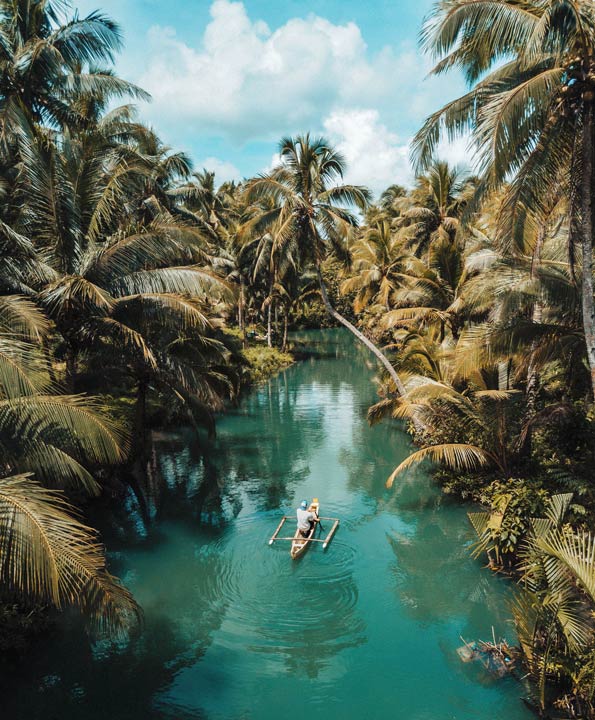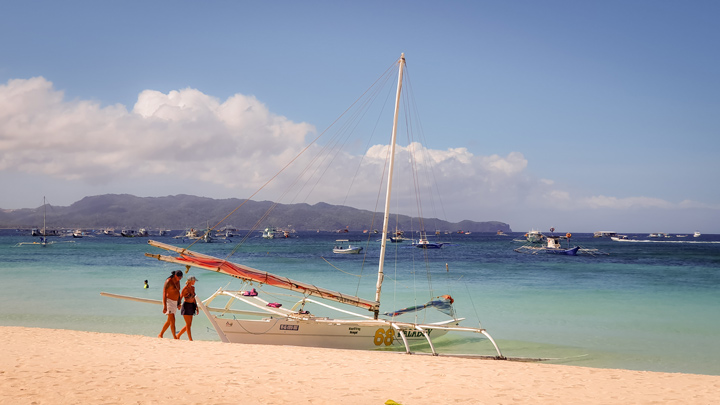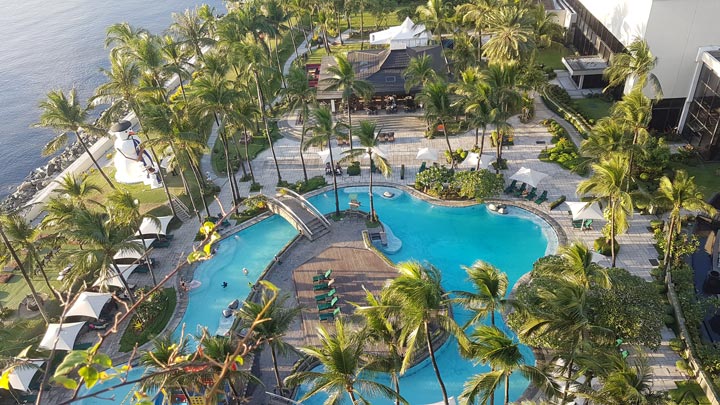“Let us continue to work together and work toward our common goal of maintaining safe and responsible tourism for the benefit of everyone,” says the DOT head.
READ ALSO: Business Plan: How Can Hotels Thrive In A Pandemic? This Hospitality Group’s Pivot Gives Us An Idea
Over the past year, the tourism and hospitality industries continue to be one of the hardest hit by the global health crisis. About 88 percent of respondents from this sector said in a July 2020 analysis by Price Waterhouse and Coopers says that they expected a 50 percent loss in earnings as lockdowns severely restricted tourism activity.
With cities and regions in the country going in and out of different types of quarantine, the industry continues to suffer for it. These businesses, services, and properties are clamoring to reopen with revamped safety features in place. But many are still obviously apprehensive of any sort of leisure travel—for perfectly valid reasons. And those who do venture out of their homes to go on trips or weekend getaways are met with angry social media posts that question their character and sense of responsibility.
Tourism Secretary Berna Romulo-Puyat insists, however, that the anger is directed toward carelessness and not at travel per se. “There is only backlash when tourists either do not follow health and safety protocols, or if they falsify their medical documents in order to travel,” she says.
Health and safety remain the topmost priority for her department even as they continue to promote domestic travel. In addition to protocols being constantly communicated to travelers, they have been working with local government units (LGU) and tourism establishments to ensure that these measures are in place and strictly implemented.
She says that their work at the Department of Tourism (DOT) is centered on the gradual reopening of tourist destinations to support the livelihood of tourism workers in the country.
“A lot of workers lost their jobs when tourism took a halt last year, so we are continuously finding ways to provide assistance and help them recover during this challenging time,” Romulo-Puyat says. “By practicing safe and responsible tourism, we can help the industry recover sooner.”
In a lengthy correspondence with Lifestyle Asia, the DOT head touched on vaccine passports, domestic travel, and the way forward for Philippine tourism.

LA: What would be the common ground between your sector and those who have concerns that any sort of tourism activity will only lead to higher numbers?
BRP: The pandemic has taken a toll on individuals, businesses from different industries, and the world as a whole. I cannot deny that we are all facing a huge obstacle. When the health crisis hit, we had to act fast and pivot our projects to focus on the safety of Filipinos while supporting the tourism workers all over the country.
That being said, there hasn’t been an outbreak or an increase of infections due to tourism.
Our destinations that have reopened since last October have maintained their MGCQ status because of the health and safety protocols we have strictly implemented together with the LGU.
The DOT, through its regional offices, continues to coordinate with LGUs in ensuring that minimum health and safety protocols are observed by the various tourist establishments. Our Regional Offices conduct regular inspections of accredited tourism establishments to ensure the safety of our tourists and tourism workers.
Given the current situation of the country, do you think that baseline protocols for tourist spots and the hospitality industry are enough?
We are continuously working with our partners in the Department of Health (DOH), health experts, local government units, and tourism establishments, including hotels, resorts, and restaurants, in implementing protocols that will ensure the safety of the public.
We provide accreditation to tourism establishments that have complied with our standards for safety and ensure that only those who have set health and safety standards are allowed to operate during this time.
The DOT has also implemented safety guidelines for restaurants, tourist land transport services, MICE facilities, island and resort destinations, travel and tour operators, and recreational diving establishments. These health and safety guidelines were formulated in consultation with our stakeholders and were aligned to the standards set by the DOH and the World Health Organization (WHO).
We always look for ways to make travel safer and more convenient. Currently we are exploring innovations that will enhance our current Travel Philippines app in order to make it a one-stop travel pass to enter various destination in the country where travelers can store and submit their medical data securely for registration, especially in light of the vaccine rollout to more Filipinos and around the world.
While the industry does its part, we also hope that travelers recognize their responsibility to comply with minimum health and safety protocols like wearing face masks and face shields, regular hand washing or sanitizing, and physical distancing.
According to a Skift article, Philippine tourism is the most affected in the region by the COVID. Do you think this is a fair statement? Do you think there are solutions from our neighbors that we can apply here?
Thank you for giving me an opportunity to correct some of the points raised in the Skift article dated March 3, 2021 entitled, “Philippines Faces Staggering Road to Recovery as Southeast Asia’s Most Tourism-Dependent Destination.” Contrary to the data they cited, tourism is not 25 percent of our GDP but 12.7 percent. While we recognize tourism to be a driver for socio-economic growth, our economy can depend on other sectors as well to sustain the country’s economy.
What the article also fails to mention is that we have a very robust domestic tourism market. In 2019 alone, we recorded 110 million local trips around the country, and 10.8 of tourism’s 12.7 percent GDP contribution is credited to domestic travel. This is why our pivotal strategy for recovery leverages on local travel; gradually and responsibly reopening tourist destinations for Filipinos with health and safety measures in place.

Given that vaccine rollout and immunization programs have already taken off around the world, including here in the country, we are eyeing the adoption of the International Air Transport Association (IATA) Travel Pass app that will enable passengers to create a digital passport, verify their test or vaccination with regulatory authorities, and submit requirements such as test results or vaccination certificates to facilitate international travel.
The IATA is the travel association for the world’s airlines, representing some 290 airlines or 82 percent of total air traffic. Currently, around 20 airlines around the world are using the Travel Pass in a trial phase.
Last month when restrictions were lifting slowly, you said in a CNN interview that tourism workers should be given priority with the vaccines. As cases have gone up and tourism restricted again, do you still believe this?
I am glad to note that tourism frontline workers in airports and quarantine hotels have already been included by the IATF in Priority Group A4 of the Government’s COVID-19 Immunization Program. At present, we are coordinating with IATF to include other tourism workers (i.e. tour guides, operators and other accredited workers and service providers) in the said priority group.

It is, indeed, critical for our frontliners, especially those who continue to man our ports of entry and those who serve at accommodation establishments that have been repurposed as quarantine facilities.
These personnel have been there at the onset of the pandemic—had risked life and limb during the repatriation efforts and up to now, remain at risk with the constant exposure with incoming travelers and guests from all parts of the world.
Protection through the vaccine and health care support systems will primarily boost their immune system and more importantly, fortify their mental and emotional core to continue working under stressful COVID conditions. Our sector’s human capital is essential to the country’s socio-economic recovery.
Last December, you expressed support for a global vaccine passport. What do you like about the proposal, what do you think would be problem areas, and how would that be implemented?
We support any effort that will help facilitate international travels when borders are reopened. The concept behind COVID-19 passports and other travel passes being proposed is to make it easier, faster, and safer to cross borders. It reintroduces uniformity in travel protocols and significantly lessens the barriers that travelers may encounter as international travel aims to reopen safely post-pandemic.
However, the production of a universal system that recognizes all versions of the vaccine passport is a challenge in itself. The willingness of destinations to accept them is also another problem as mutual recognition is essential to facilitate travel between countries. This is why, here in the Philippines, we are tackling this in a whole-of-government approach and not just the DOT alone. There are health and medical, diplomatic, and data privacy issues that are under purview and expertise of other departments and agencies.
The success of these proposals will depend on policies and standards to be developed by concerned governing bodies. It is important that there is interoperability with the systems that will be implemented.
They should be able to address all the technical and moral concerns in the implementation of the passports and be agreed upon by nations to effectively facilitate international travel in the near future. Simultaneously, governments should boost efforts on their national vaccination programs decrease the divide between vaccinated and unvaccinated individuals, and have more citizens enjoy the benefits of a global vaccine passport.
What are some of the immediate concerns coming from the tourism and hospitality sector that are not widely known, and how are they being addressed?
First, a need for working capital. In our consultations with the private sector as we were crafting the Tourism Response and Recovery Plan, there was a strong clamor for the need for access to working capital. This therefore became the basis of the Department’s inputs to Bayanihan 2, where a total of P10.1 billion was allocated to help the tourism industry in its recovery.
Of this amount, P6 billion is allocated for working capital loans under the CARES for TRAVEL program of the DOT and the Department of Trade and Industry’s Small Business Corporation. Through the CARES for TRAVEL program, MSMEs in the tourism field will have access to zero interest, no collateral loans with a loan term period of up to four years, including a corresponding grace period of up to one year.
The borrower MSMEs would only need to pay a one-time service fee to the SB Corp., and the amount of which will depend on the loan term period: four percent for one year; six percent for two years; 7.5 percent for three years, and eight percent for four years.
As of March 31, a total of 346 loan applications have been approved with a loan amount of P129,117,568.
Secondly, financial assistance for displaced tourism workers. The tourism workforce was also severely affected by the pandemic. Out of the 5.7 people employed in tourism in 2019, 4.8 workers have either lost their jobs or have been working with flexible or reduced working hours.
P3 billion has been allocated for displaced tourism workers, under the DOT and DOLE’s financial assistance program, where affected tourism workers can receive P5,000 each. As of April 14, 2021, a total of 399,1334 tourism workers have benefited from the program, with total cash assistance amounting to P1,996,670,000.
Thirdly, restoring confidence in global markets. Even when international travel restrictions are in place, the Philippines must maintain a favorable image to foreign markets in order to emerge as a prime tourist destination when the pandemic comes to an end.
Last September, the Philippines received the World Travel and Tourism Council (WTTC) Safe Travels Stamp after our health and safety guidelines were assessed as aligned with organizations core requirements. It is the world’s first safety and hygiene stamp for travelers to recognize governments and businesses that have adopted global health standardized protocols.
Currently, 33 accommodation establishments across six regions in the country have been awarded the WTTC Safe Travels.
How have tourism targets and outlooks adjusted for the year?
We are reviewing the targets under the National Tourism Development Plan 2016-2022 with respect to visitor arrivals, revenue and employment. The review will be completed this month.
But we can say that the most significant adjustment would come from refocusing all our efforts on domestic tourism as international travel protocols remain in place for the coming year.

The reopening of domestic tourism is just the first step as we continue to work together toward the revitalization of Philippine tourism. The DOT will do its part and continue developing initiatives and guidelines that will protect its stakeholders and ensure that Filipino communities can both contribute and benefit from the industry.
Which tourists posts or regions are you prioritizing to lead the way for a tourism revival?
Generally, areas under MGCQ are allowed to open for tourism. However, we have to make it clear that the decision to reopen domestic destinations is in concurrence with the local executives as it is their prerogative to decide on when to reopen their destinations and what testing options may be taken by tourists to enter their respective jurisdictions.
The DOT continues to urge both municipal and provincial governments to further tighten controls, more so in areas that have reopened to domestic tourists to stem the transmission of the COVID-19 virus.
We are taking the pandemic as an opportunity to assess and recalibrate our tourism products and products and market development efforts to give tourists more options when traveling in the new normal.
In the recent survey conducted with the AIM-Dr. Andrew L. Tan Center for Tourism and Guide to the Philippines, the results showed that traveler preferences have evolved, with most respondents choosing outdoor activities in well-ventilated areas such as going to the beach, hiking, and biking in their leisure travels.
In connection with this, the DOT is now leading the development of inter and intra-regional tourism circuits.
In the north, we are implementing a WW2 Historical Caravan that will connect several areas in the Cordilleras and Region 1 which have been witness to important World War II historical events. The CAR region will be developing a chef-driven Slow Food Culinary Circuit that will explore the culinary heritage of Abra and Kalinga.
We are also planning the Clark-Busuanga and Clark-Bohol (via Cebu) Travel Bubbles which will promote inter-regional tourism and help airlines and airports gain back the trust and confidence of domestic travelers.
In the Visayas, DOT Region-VIII is developing Intra-Regional Circuits which include bike tours, diving, heritage, and culture products around Leyte, Samar, Guiuan and Balangiga.
And in Mindanao, we are working on the Surigao del Sur Eco-Tourism Loop where visitors can experience all kinds of water-related adventures, from waterfall and enchanted rivers hikes to visiting underwater cave systems, or simply relaxing on white sand beaches.
Furthermore, these developments all over the country will play an important role in maintaining regional biodiversity, protecting heritage and culture, and jumpstarting the economy.
How can the public help the tourism and hospitality sector apart from physically patronizing them?
It is important for the public to abide by the minimum health and safety protocols to keep our destinations safe from COVID-19. We want to help destinations get back on their feet by providing livelihood. At the same time, we also recognize the importance of ensuring that the health and safety protocols are in place.
As we approach the summer season, we remind traveling Filipinos to be mindful of the importance of following the minimum public health standards and other requirements coming from the IATF and LGUs. Wear your mask and face shield, sanitize your hands often, and maintain physical distancing at all times.
I would like to take this opportunity to remind everyone of the value of community—let us continue to work together and work towards our common goal of maintaining safe and responsible tourism for the benefit of everyone.
What may seem as a minor breach in protocol may affect the lives of an entire community, so we must be mindful of others and continue to practice the minimum health and safety protocols to protect not only ourselves but everyone in the community.
Banner Photo by Alejandro Luengo on Unsplash





